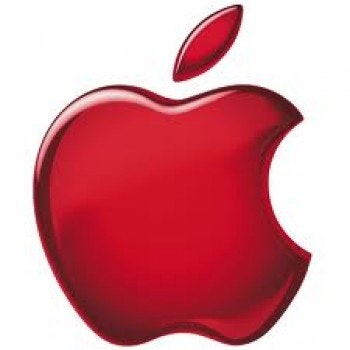The stock price of Apple Inc. (NASDAQ:AAPL) has been rather volatile in the last few months. The company’s stock dipped below $400, but is now in the $450 region thanks to record cash pay-outs and share repurchase commitments. Investors are questioning the company’s abilities to churn out revolutionary products, as the company is not expected to unveil any new product soon. A look at Apple’s SWOT is warranted to see the possible strategic shifts that might take place going forward.
Strengths
Brand value: Apple Inc. (NASDAQ:AAPL)’s brand gives the company the ability to sell great products at very high prices, and feel very good about it. The company’s ranked as the 2nd most valuable brand in the world at the end of 2012, just behind The Coca-Cola Company (NYSE:KO), according to Interbrand. Owing to this massive brand value, the company has developed a massive fan base of more than 500 million registered users on iTunes, and likely more across other products and devices it sell.
Expertise across Hardware, Software and Services: Apple Inc. (NASDAQ:AAPL) is a leader in rolling out high-quality hardware devices whether its smartphones, tablets, MP3 players or PCs, and combining them with great software and additional services. The company’s long and proven track-record in combining these three areas to come up with more innovative devices gives the company an edge in introducing more innovative products.

Pricing power: Owing to the massive brand value, along with the high-quality innovative devices it produces, Apple Inc. (NASDAQ:AAPL) is able to charge premium prices for it’s products. The company’s ability to charge higher products has led to the company earning much more relative to competitors in the IT Hardware space. The company’s balance sheet is rock solid as a result, retained earnings made up 78% of total shareholders’ equity in fiscal year 2010, which jumped to 86% in the most recent quarter.
Weaknesses
Reliance on Crown Jewel: A huge bulk of Apple’s revenues flow in from its crown jewel, the iPhone. However, the reliance has been diversified away, thanks to the iPad. Revenues from iPhone sales made up 53% of its total revenues in the most recent quarter, and a year ago this number stood at ~57%. The company is moving in the right direction, but company’s fortunes in recent years have been directly tied mainly to the iPhone shipments, which leads to product cycle risk.
Carrier subsidies in Emerging Markets: Apple Inc. (NASDAQ:AAPL)’s model of making pricey phones affordable to consumers has largely been dependent on the up-front carrier subsidies from telecom providers. And this has worked very well for the company in the U.S. and in most developed markets. However, carriers in most emerging markets are unlikely to offer subsidies, primarily because most EM consumers are not used to paying for “data plans”, and buy the phone outright.
Offshore cash: Apple Inc. (NASDAQ:AAPL) still has more than $102 billion in cash offshore, which will translate into a massive tax-bill at current rates. However, that should not be a problem, as the company doesn’t intend to repatriate it any time soon.
Slower pace of innovation: One of the major concerns for Apple’s recent sell-off has been the company’s reduced pace of innovation. The company hasn’t introduced game-changing products for a while now.
Big declines in PC: Apple Inc. (NASDAQ:AAPL) did start out as a computer manufacturer, but the company’s exposure to the PC market is a lot less today than before. The PC market is going through a sizable decline, as casual users are opting for tablet devices. Apple’s revenues from the Mac made up 27% of its total revenues in FY2010, which went down to 12% in the most recent quarter.
Opportunities
Enterprise solutions market: Apple Inc. (NASDAQ:AAPL) along with Google’s Android-based devices has a weak footing on the Enterprise phone market. The enterprise solutions portion of phone market, is a strong niche, which plays to the strength of rival, Research In Motion Ltd (NASDAQ:BBRY). BlackBerry’s OS has a much stronger network security system compared to iOS and Android, along with the QWERTY keyboard. BlackBerry’s recent launches of its Q10 and Z10 devices have been met with mixed reviews. Some analysts are expecting the touch screen based BB10 device, the Z10 to sell at least 4 million units in the current quarter. Apple can push for a stronger line of secure devices which will appeal to enterprise customers.
Expand Services Further: Apple has been constantly adding newer apps and content on iTunes constantly which lead to more incremental revenue from services. Apple Inc. (NASDAQ:AAPL)’s recently launched iRadio is a great addition to that, because it is ad-supported and will likely lead to more A la Carte sales on iTunes. Sales from iTunes and other services now boast of a $16 billion revenue run rate, which will likely go higher in the future. The company can add newer version of subscription or ad-supported video streaming content like Hulu and Netflix, Inc. (NASDAQ:NFLX), which will lead to more revenues.
Ad Exchange: While advertising isn’t a core business for Apple, the recent launch of the iRadio does lay the foundation for a solid Apple ad exchange. Advertisers will be able to user Apple Inc. (NASDAQ:AAPL)’s user data and purchase patterns to lay out ads on iPhones, iPads and MacBooks. Apple already has a small-scale iAd business which could get a big bump thanks to ads on the iRadio. Apple should have very strong targeting capabilities due to user information including location, which will lead to higher price per ad portrayed. Apple can earn incremental non-core revenue by using the information of its existing users for a broader Ad Exchange system.





